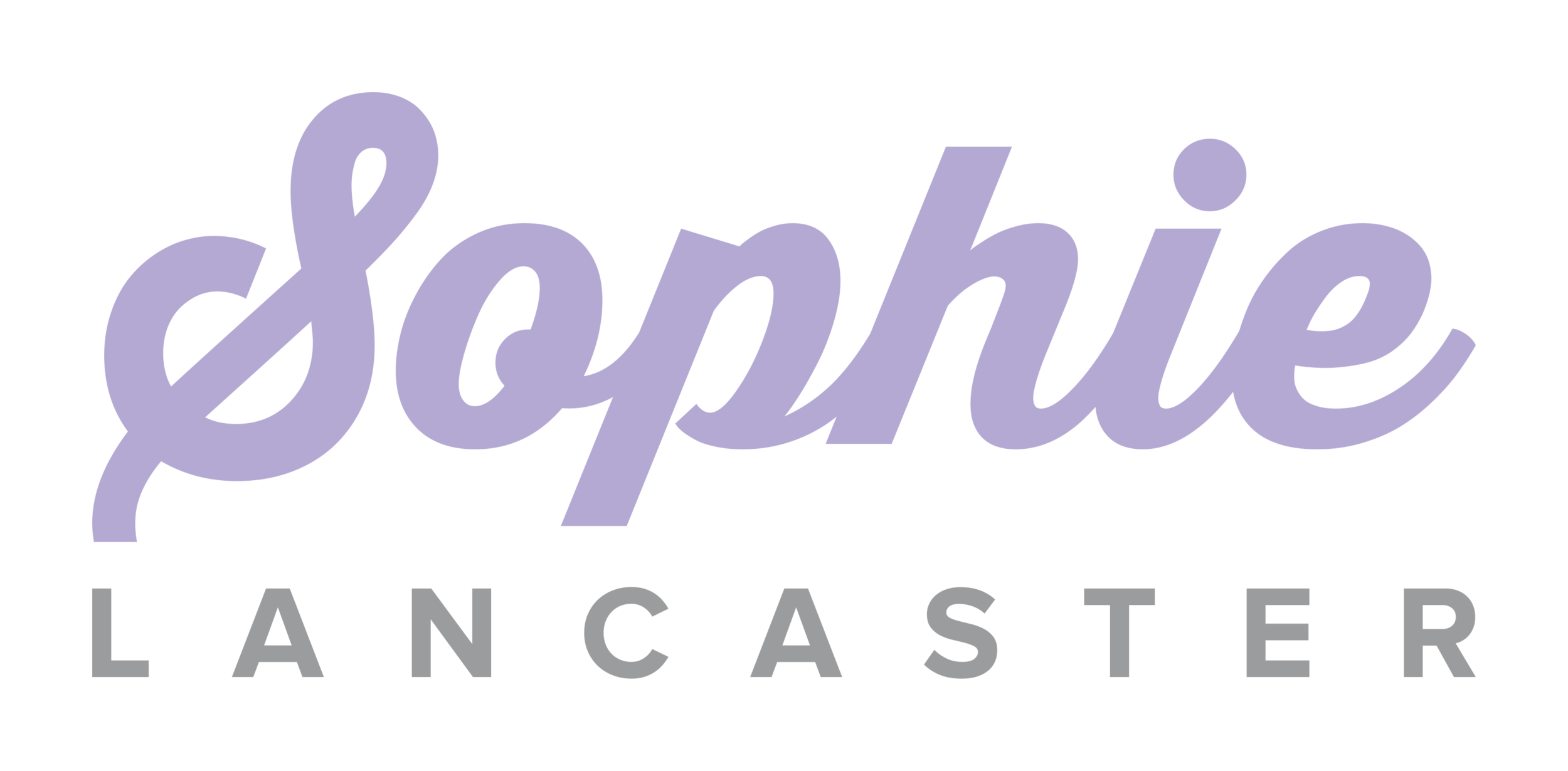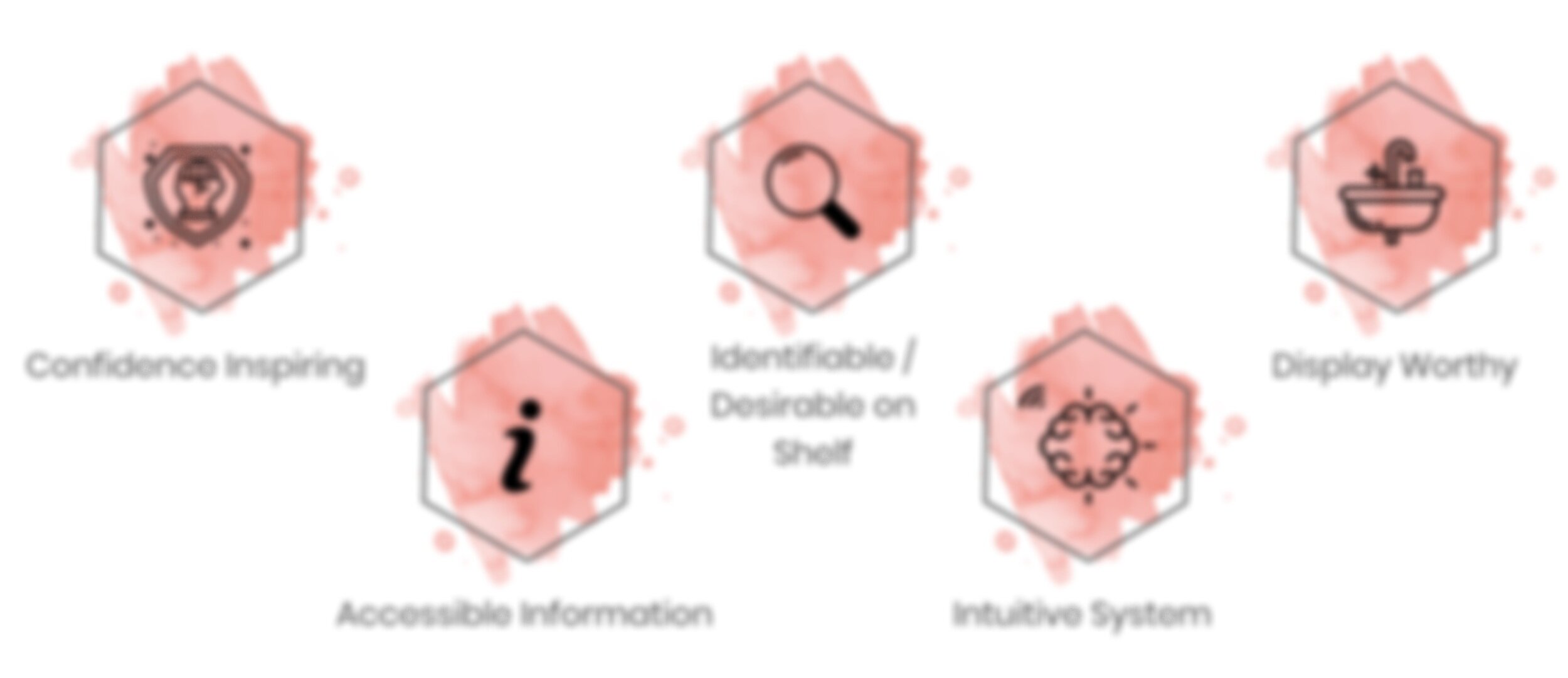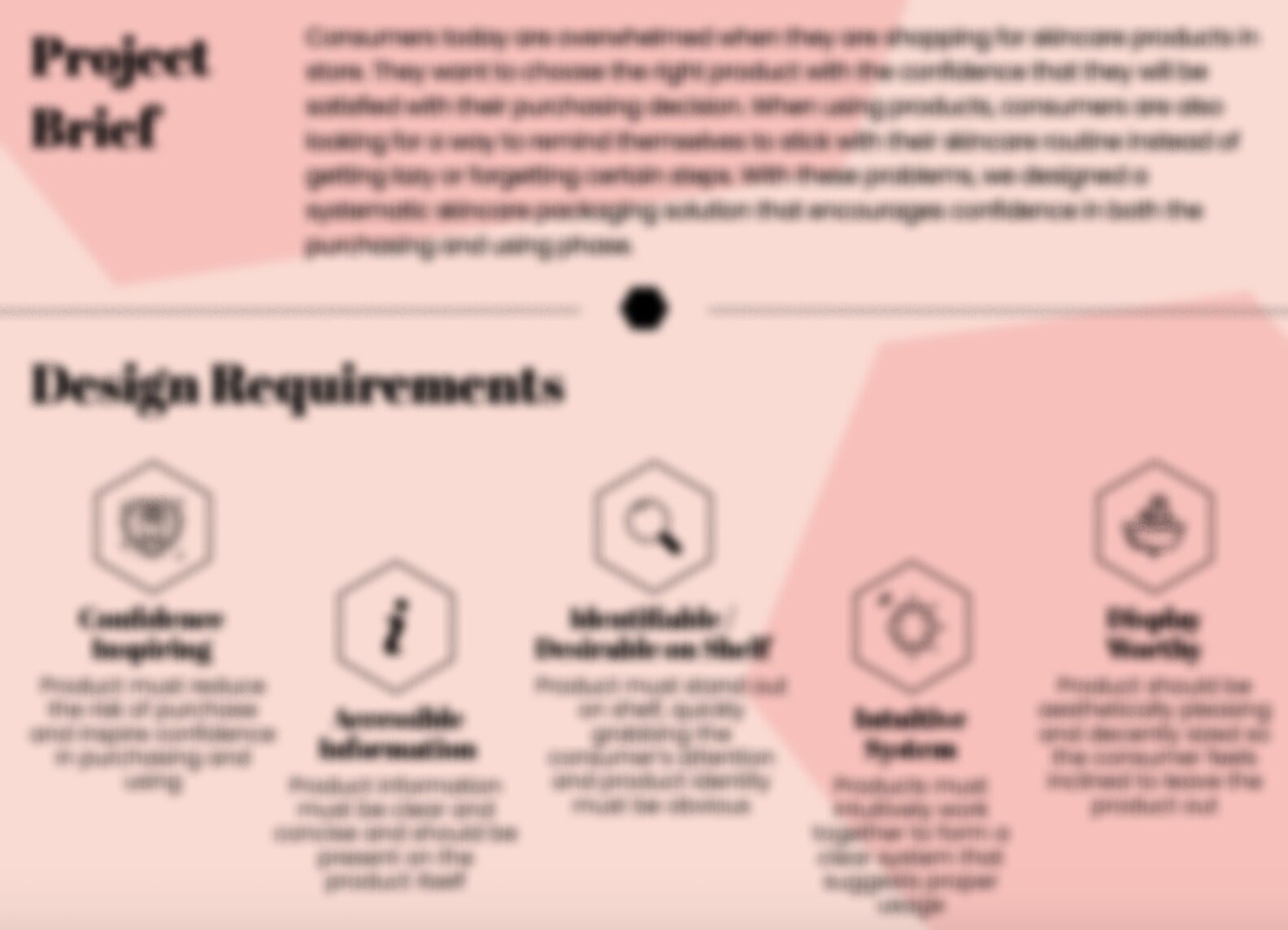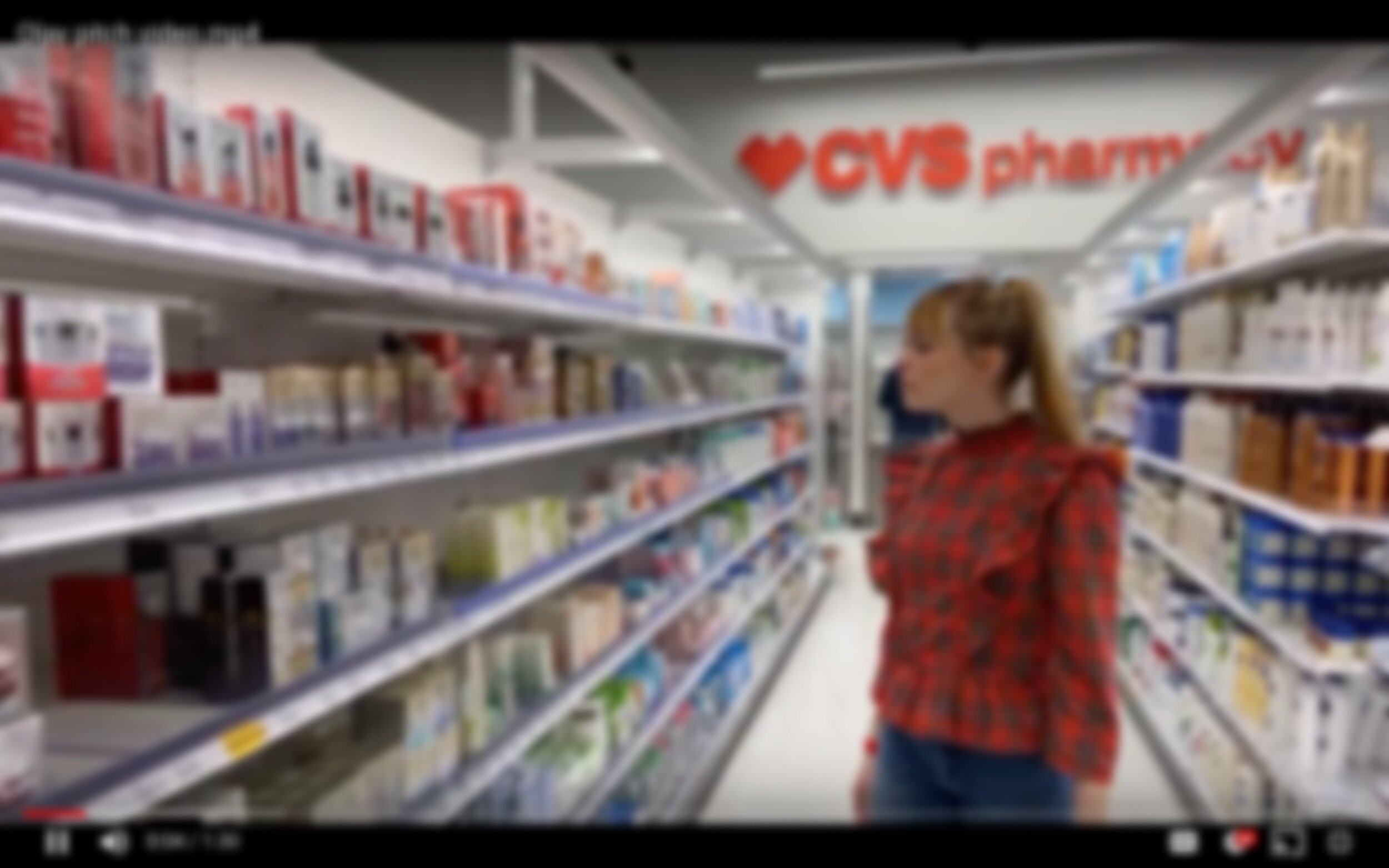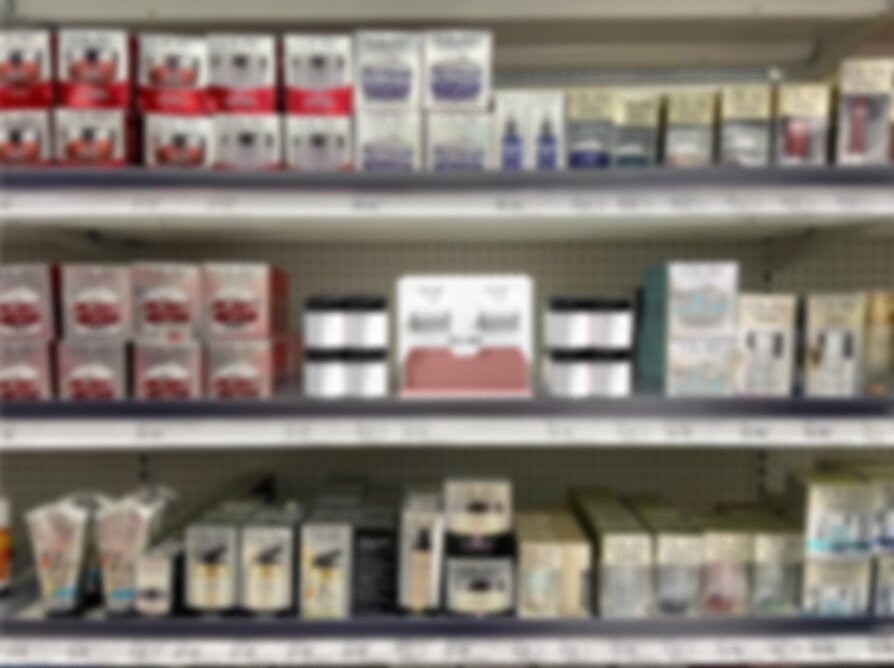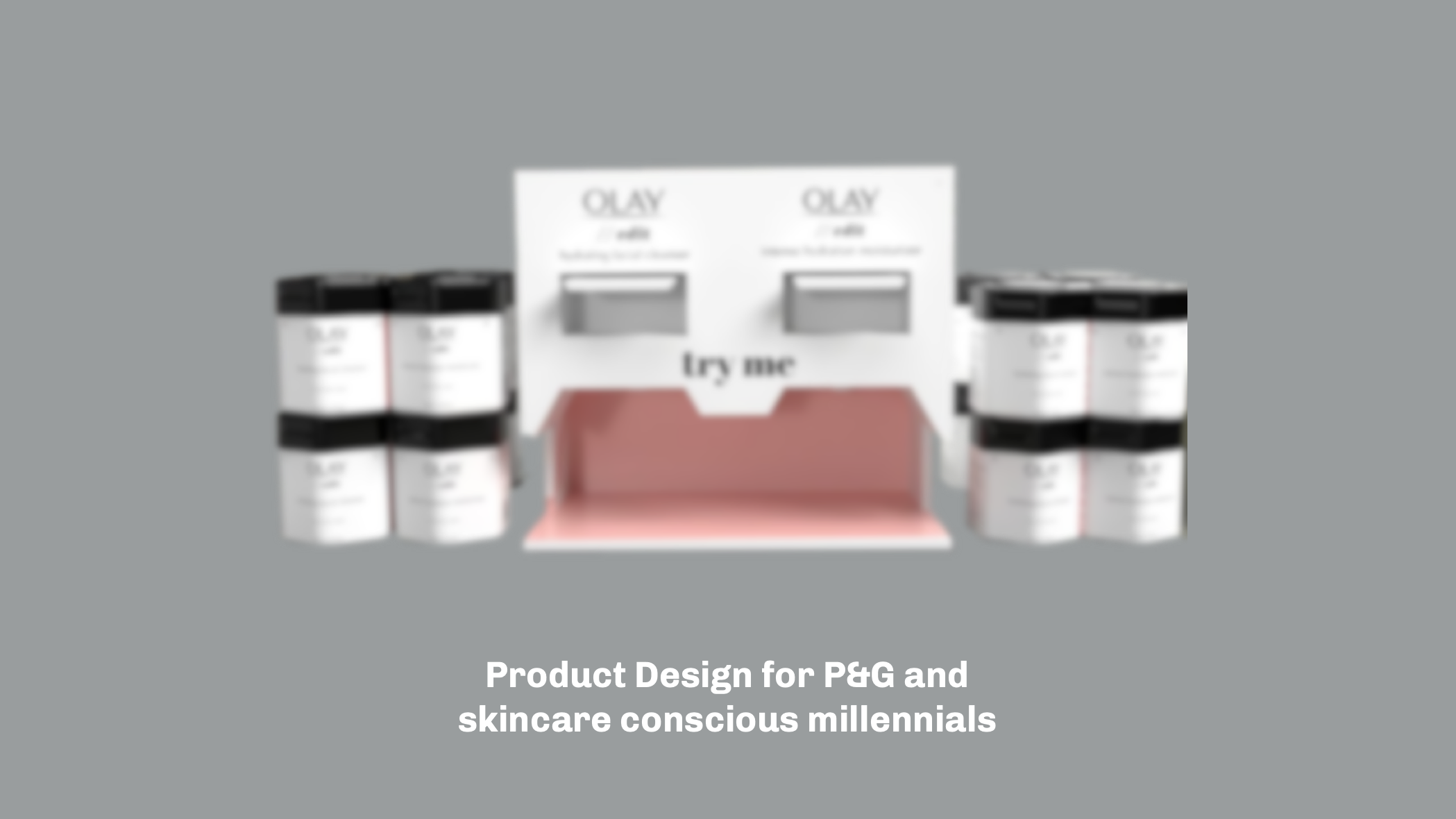
Olay Product Design
Human-Centered Product Design
Nudging skincare purchase and use
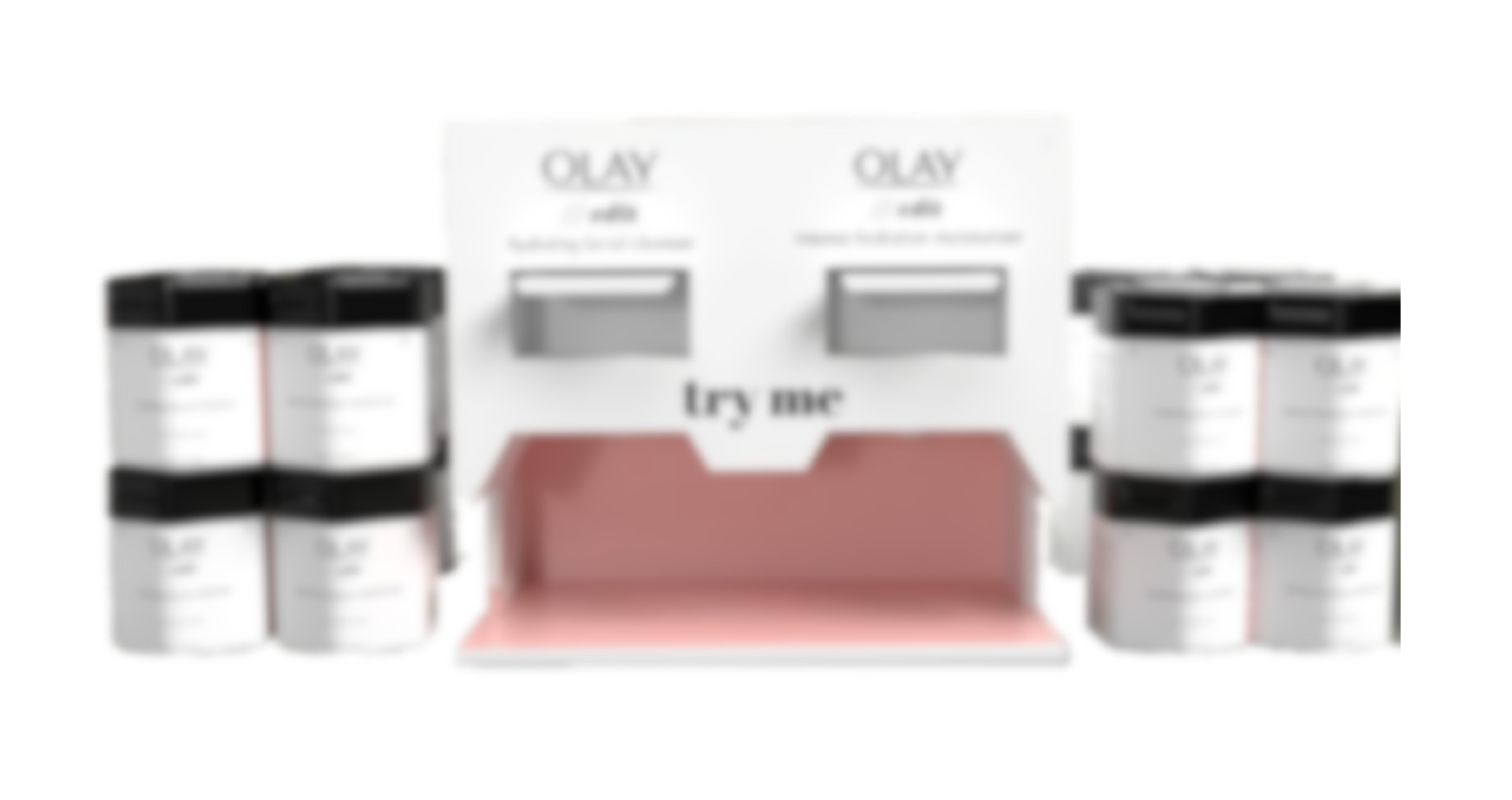
Olay Product Design
How might we design a skincare package that nudges a new target customer to buy certain products at shelf and then continues to nudge them into the proper usage of those products at home?
Skills Used
Confidentiality Disclaimer
As part of my EDI degree I applied the human-centered design process to a corporate sponsored (Procter & Gamble) product design project. Due to a confidentiality agreement with P&G, I cannot disclose specific details about the project and the proposed solution.
Discovery Research
Understanding Our Consumer
In the beginning of the project we conducted in-home interviews with 8 different consumers. During these interviews we asked consumers to highlight current tensions in their skincare journey, from purchasing in-store to using at home, and asked them to show us how they currently buy and use their skincare products.
During this part of the process I personally conducted 2 in-home interviews. Through these interviews I was able to gain user research skills and now feel confident that I can successfully gain insights from users using these methods.
Concepting and Ideation
Uncovering Insights and Opportunity Areas
Once we had gained a better understanding of user behaviors, tensions and emotions surrounding the skincare journey, we mapped our findings and utilized frameworks such as journey maps and 2x2s to discover underlying insights and opportunity areas in this area.
From the synthesis part of the process I learned the importance of understanding each individual user and then finding patterns across all users. By doing this we were able to uncover insights that extended across our entire group of consumers.
Downloading our findings from our in-home visits
Mapping our user’s tensions and behaviors using a journey map
Design and Prototyping
Bringing it to Life
While we were able to give ourselves more direction by uncovering key insights and opportunity areas, there were still crucial questions that we needed to answer. In order to do this we created a total of 27 low-fidelity prototypes that we asked 15 different consumers to interact with through various activities we strategically designed. After the consumers had interacted with our prototypes we again synthesized our findings to get us even closer to a final design direction.
For this part of the project I was able to hone my low-fidelity physical prototyping skills. I constructed a total of 6 prototypes that were included in our final set. Additionally, during this round of testing I ran two different stations during consumer site visits which meant I talked to a total of 15 consumers about our prototypes. During this part of the process I realized how valuable low-fidelity prototypes can be in answering crucial design questions.
Final Solution
Addressing Tensions Through Final Design
After three total rounds of user interviews and testing we felt that we had gathered enough information in order to come up with 5 solid emotional and functional design requirements for our final product. Once we had decided on these 5 design requirements we came up with 10 design features that we felt our final product should incorporate. We then created a minimum viable product of our final design that included all 10 design features.
For our final design solution I spent the majority of my time focusing on how we could best tell the story of our final design. I also spent a lot of my time discussing specific design decisions with the team and made sure that the direction we decided on aligned with what we heard from our users. At the end of the day a strong design is only part of the solution. The second part of the solution, which is just as important, is figuring out how to sell that design in a compelling way.
Deliverables
Key Takeaways
It is critical to talk to users at every stage of the design process
When pitching a final design you need to be able to justify every single design decision that was made — a good way to justify these decisions is by going back to user research
What users say they will do and what they actually do is very different and it is important to pick up on this behavior in interviews
Creating visually powerful artifacts is crucial for a successful product pitch
Contributions
I would like to say a special thank you to my project team members Lily Smith, Brandon Washington, Zicheng Gu and Janice Zhou, my professors Jim Wicks and Helen von den Steinen, our sponsors at P&G and those who contributed through user research.
